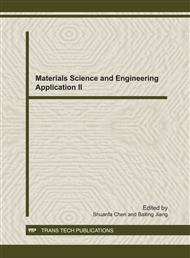p.524
p.529
p.535
p.539
p.541
p.544
p.548
p.551
p.557
GFRP Bar Reinforced Concrete Bridge Deck: Stress in GFRP Bar under Ultimate Design Loads
Abstract:
In current ACI 440.1R-06 design guideline, an environmental reduction factor (ERF) is specified to account for long-term durability of GFRP bar used in reinforced concrete structures. Such ERF factor is still lack of confidence to concrete industry prior to deliberate calibrations with in-field real time data. In this paper, a parametric study on the design of GFRP bar RC bridge deck per ACI 440 guideline is presented to investigate the stress level in GFRP bar under ultimate design loads per AASHTO LRFD Specifications. Results show that tensile stress in GFRP under ultimate design loads is always less than 25% of GFRP guaranteed tensile strength f*fu, which is much lower than the design strength per as specified in ACI 440 Guideline (i.e., 0.7 f*fu). It showed that GFRP bar RC bridge deck as designed in accordance with ACI 440 guideline could give sufficient safety margin.
Info:
Periodical:
Pages:
557-561
Citation:
Online since:
December 2011
Authors:
Keywords:
Price:
Сopyright:
© 2012 Trans Tech Publications Ltd. All Rights Reserved
Share:
Citation:


